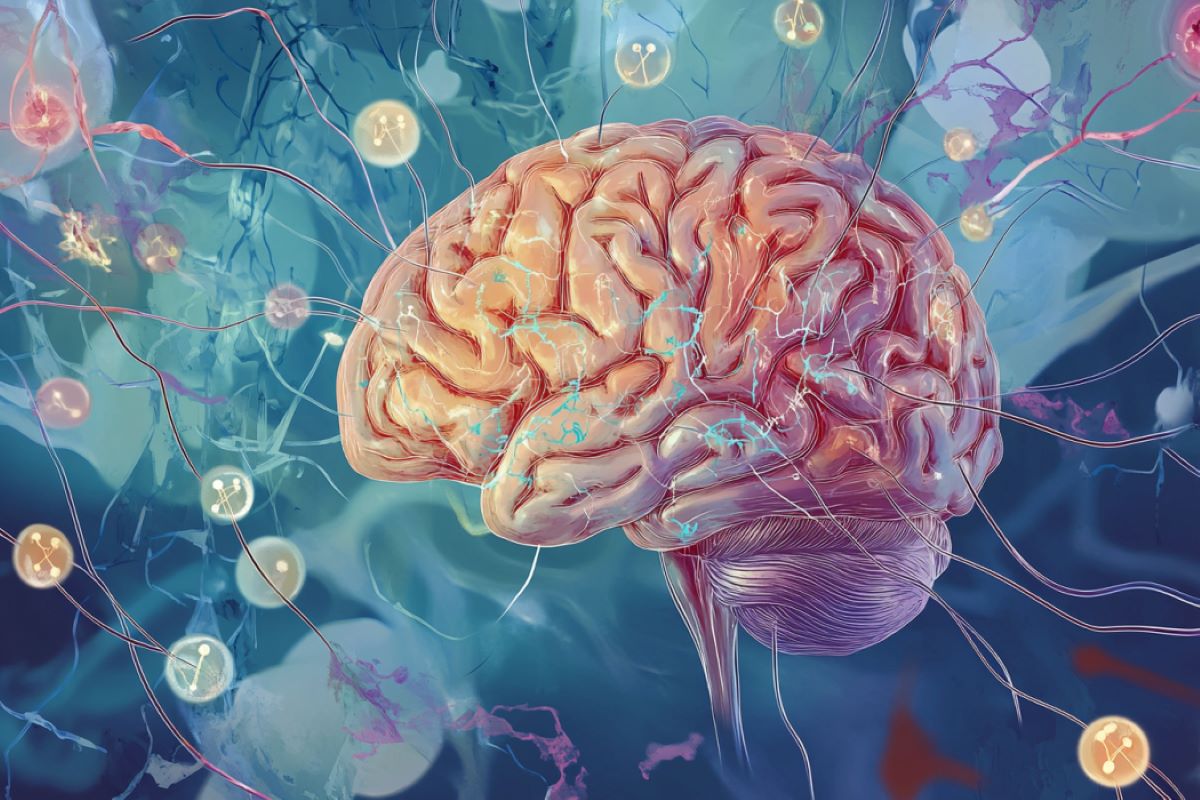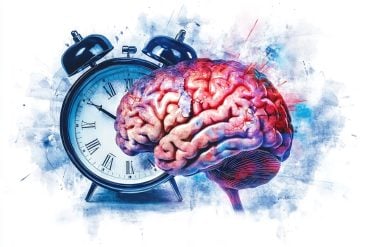Summary: Neuroscientists have identified specialized brain cells that form flexible “coordinate systems” to help us track where we are within a sequence of actions. These cells map our position in complex behaviors, making connections similar to a music box playing different tunes.
This discovery reveals a biological algorithm that could explain how we generalize learned behavior across new tasks, a core component of intelligent behavior. Researchers observed that mice used these brain circuits to guess the next step in unfamiliar tasks, indicating an understanding of general structure.
Understanding these systems may also shed light on psychiatric disorders like schizophrenia, where these circuits are disrupted. The findings could advance treatments by targeting cognitive processes that break down in mental health conditions.
Key Facts:
- Behavioral Mapping Cells: Certain brain cells track progress toward subgoals, like individual steps in a recipe.
- Flexible “Behavioral Coordinate System”: These cells work together to map relative positions within a task sequence.
- Implications for Psychiatry: Research suggests these circuits may be disrupted in schizophrenia, affecting goal-tracking accuracy.
Source: Sainsbury Wellcome Center
Neuroscientists have discovered brain cells that form multiple coordinate systems to tell us “where we are” in a sequence of behaviours. These cells can play out different sequences of actions, just like a music box can be configured to play different sequences of tones.
The findings help us understand the algorithms used by the brain to flexibly generate complex behaviours, such as planning and reasoning, and might be useful in understanding how such processes go wrong in psychiatric conditions such as schizophrenia.

The research, published today in Nature, outlines how scientists at the Sainsbury Wellcome Centre at UCL and University of Oxford studied mice learning different behavioural sequences but with the same structure.
This allowed the team to uncover how mice generalise structures to new tasks, a hallmark of intelligent behaviour.
“Every day we solve new problems by generalising from our knowledge. Take cooking for example. When faced with a new recipe, you are able to use your background knowledge of similar recipes to infer what steps are needed, even if you have never made the meal before.
“We wanted to understand at a detailed cellular level how the brain achieves this and also to infer from this brain activity the algorithms being used to solve this problem,” commented Dr Mohamady El Gaby, first author on the study and postdoctoral neuroscientist in the Behrens lab at the Sainsbury Wellcome Centre at UCL and Nuffield Department of Clinical Neurosciences, University of Oxford.
The researchers gave mice a series of four goal locations. While the details of the sequences were different, the general structure was the same. Mice moved between the goal locations (A B C and D) that repeated in a loop.
“After experiencing enough sequences, the mice did something remarkable – they guessed a part of the sequence they had never experienced before. When reaching D in a new location for the first time, they knew to go straight back to A.
“This action couldn’t have been remembered, since it was never experienced in the first place! Instead, it’s evidence that mice know the general structure of the task and can track their “position” in behavioural coordinates,” explained Dr El Gaby.
To understand how the mice learned the general structure of the task, the researchers used silicon probes that allowed them to record the activity of multiple individual cells from an area of the brain called the medial frontal cortex.
They found that the cells collectively mapped the animal’s “goal progress”. For example, one cell could fire when the animal is 70% of the way to its goal, regardless of where the goal is or how far it takes to reach it.
“We found that the cells tracked the animal’s behavioural position relative to concrete actions. If we think of the cooking analogy, the cells cared about progress towards subgoals such as chopping the vegetables.
“A subset of the cells were also tuned to map the progress towards the overall goal, such as finishing preparing the meal. The “goal progress” cells therefore effectively act as flexible building blocks that come together to build a behavioural coordinate system,” said Dr El Gaby.
In effect, the team found that the cells form multiple coordinate systems, each telling the animal where it is relative to a specific action. In a similar way to a music box that can be configured to play any sequence of tones, the brain can instead “play” behavioural actions.
The team are now working to understand how these activity patterns are built into the brain’s connections, both when learning new behaviours, and how they start to emerge in the developing brain. In addition, early work from the group and their collaborators suggests similar brain activity is present in equivalent circuits in healthy humans.
This has encouraged the team to work with psychiatrists to understand how these processes are affected in conditions like schizophrenia, which is known to involve the same brain circuits.
This could help explain why people with schizophrenia overestimate their progress to goals leading to delusions.
Funding: This research was supported by a Wellcome Trust PhD studentship (220047/Z/19/Z), Wellcome Principal Research Fellowship (219525/Z/19/Z), Wellcome Collaborator award (214314/Z/18/Z), The Wellcome Centre for Integrative Neuroimaging and Wellcome Centre for Human Neuroimaging core funding from the Wellcome Trust (203139/Z/16/Z, 203147/Z/16/Z), the Sir Henry Wellcome Post-doctoral Fellowship (222817/Z/21/Z), the Gatsby Charitable Foundation, the Wellcome Trust career development award (225926/Z/22/Z), and a Wellcome trust SRF (202831/Z/16/Z).
About this neuroscience research news
Author: April Cashin-Garbutt
Source: Sainsbury Wellcome Center
Contact: April Cashin-Garbutt – Sainsbury Wellcome Center
Image: The image is credited to Neuroscience News
Original Research: Open access.
“A Cellular Basis for Mapping Behavioural Structure” by Mohamady El Gaby et al. Nature
Abstract
A Cellular Basis for Mapping Behavioural Structure
To flexibly adapt to new situations, our brains must understand the regularities in the world, as well as those in our own patterns of behaviour. A wealth of findings is beginning to reveal the algorithms that we use to map the outside world.
However, the biological algorithms that map the complex structured behaviours that we compose to reach our goals remain unknown.
Here we reveal a neuronal implementation of an algorithm for mapping abstract behavioural structure and transferring it to new scenarios.
We trained mice on many tasks that shared a common structure (organizing a sequence of goals) but differed in the specific goal locations.
The mice discovered the underlying task structure, enabling zero-shot inferences on the first trial of new tasks. The activity of most neurons in the medial frontal cortex tiled progress to goal, akin to how place cells map physical space.
These ‘goal-progress cells’ generalized, stretching and compressing their tiling to accommodate different goal distances.
By contrast, progress along the overall sequence of goals was not encoded explicitly. Instead, a subset of goal-progress cells was further tuned such that individual neurons fired with a fixed task lag from a particular behavioural step.
Together, these cells acted as task-structured memory buffers, implementing an algorithm that instantaneously encoded the entire sequence of future behavioural steps, and whose dynamics automatically computed the appropriate action at each step.
These dynamics mirrored the abstract task structure both on-task and during offline sleep.
Our findings suggest that schemata of complex behavioural structures can be generated by sculpting progress-to-goal tuning into task-structured buffers of individual behavioural steps.






